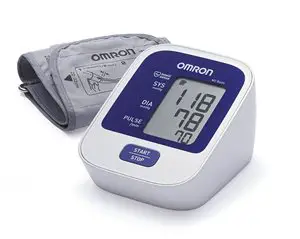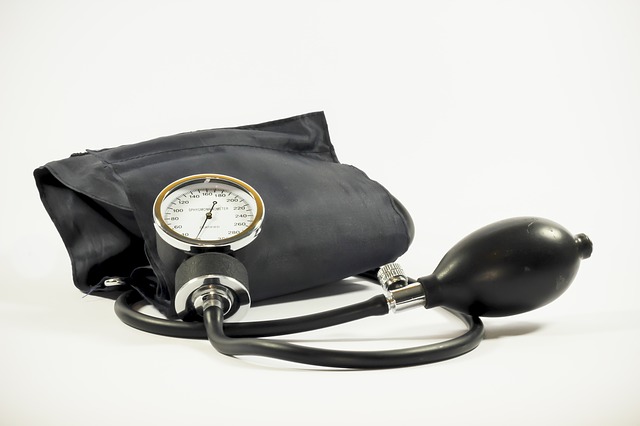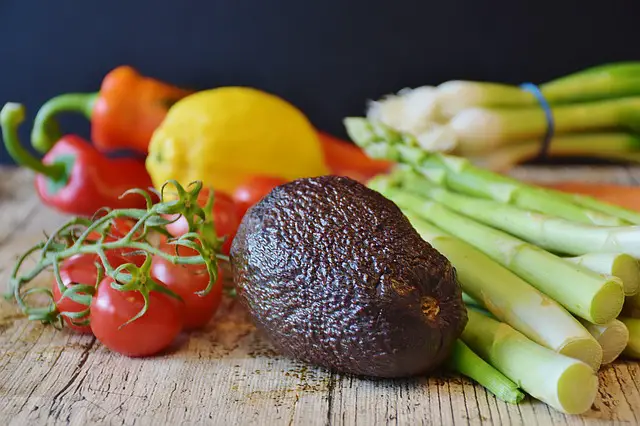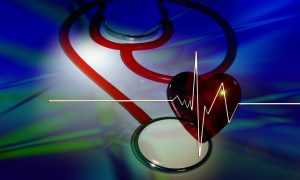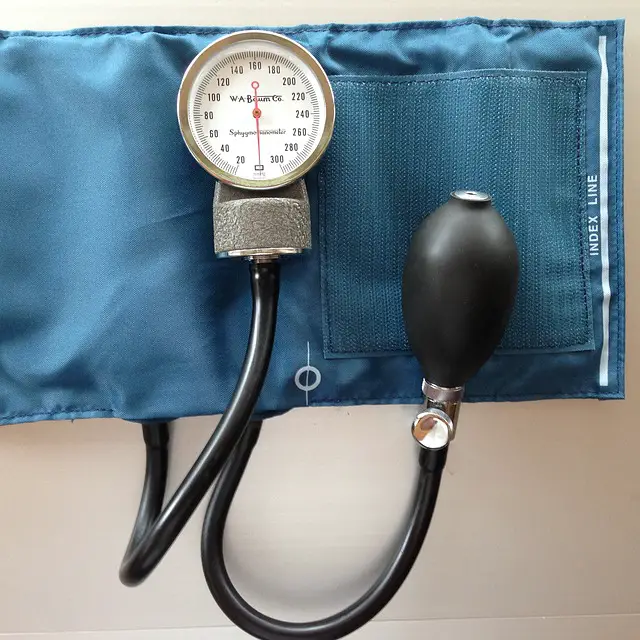What is high blood pressure and what causes it?
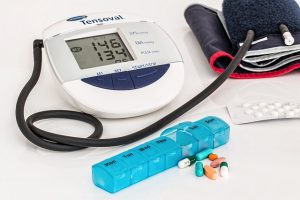
What is Blood pressure?
The pressure exerted by blood against the sides of the blood vessels as it moves through the circulatory system is called blood pressure. The thought of blood pressure elicits nothing but the fear & the horror of diseases, but in reality, blood pressure itself is not a disease. It is merely a normal phenomenon of the body.
However, the imbalance in the strength of this pressure could be something of concern. Depending on the increase or decrease of the strength, the blood pressure condition may be characterized by high and low blood pressures. Both of these conditions bring along some risk factors that methodically damages the human body.
Basics of the Circulatory System:
The heart is a muscular organ of the human body formed entirely of involuntary cardiac muscle. It works as a pump by systematically contracting and dilating to circulate blood throughout the whole body.
The process of blood circulation is quite complex considering the fact that in one single pump, the blood is circulated twice throughout the body. From the heart to the body and then returns to the heart for oxygenation. The blood is then pumped from the heart to various parts body. This blood is oxygenated and ensures that oxygen is taken to different parts of the body. The whole process consists of an interconnection of the systemic and pulmonary blood vessel.
In this context, blood pressure refers to arterial pressure in the systemic circulation.
The whole circulation process of blood is known as the cardiac cycle. This cycle occurs in the span of one heartbeat, in fact, all this happens in a single heartbeat. This heartbeat includes the systole and diastole along with the intervening pauses. Systole occurs when the ventricles of the heart contract to pump blood to the body. Diastole is when the ventricles relaxes and are filled with blood. This whole process is important and helps us understand blood pressure. Having high or low blood pressure is determined by how well this process works.
Introduction to Blood Pressure:
Blood pressure is merely the pressure exerted by the blood on the walls of the blood vessels. The maximum pressure exerted is called the systolic pressure while the minimum pressure exerted is the diastolic pressure. Blood pressure is measured in terms of systolic pressure over diastolic pressure. It’s measured in millimeters of mercury (mm Hg).
Blood pressure is one of the four primary vital health signs of the body along with body temperature, pulse rate, and respiratory rate. They are called the vital signs because they indicate a body’s primary life-sustaining functions. Blood pressure is a part of the signs of imbalance and is an indicator of risk factor symptom in many of the diseases. Note that high and low a blood pressure does not show symptoms unless it reaches a severe level.
The blood pressure is written in two numbers comprising of the systolic and diastolic pressures.
The blood pressure is written in two numbers comprising of the systolic and diastolic pressures. The normal resting blood pressure is 180/90 mm Hg. That means, the upper limit or normal systolic pressure is 180 mm hg while the lower limit or normal diastolic pressure is 80 mm Hg. Normal blood pressure at rest should be in the range of 100-140 mm Hg systolic and 60-9- mm Hg diastolic for an average adult. The numbers differ in children. A deviation from this is always a cause for concern.
Since blood pressures do not have any symptoms, most people tend to overlook it even when they are attacked. It is imperative that this attitude should avoided because uncontrolled blood pressure can severely injure or even kill the victim.
Functioning of Blood Pressure:
The blood pressure is basically the pressure exerted due to the circulation of blood occasioned by the pumping action of the heart. A difference in the mean blood pressure is the fluctuation and is basically the flow of blood from one part of the body to the other. There are a lot of factors that contribute to the fluctuation of the body’s blood pressure. These physical factors influence the arterial pressure.
Blood volume is the amount of fluid or blood present in the body.
Blood volume is the amount of fluid or blood present in the body. The rate of blood returning to the heart is directly proportional to the amount of blood present in the body. But for some reason, e.g. high salt intake may elevate the volume of blood, which then exerts pressure on the artery walls.
Resistance of Blood Vessels:
The resistance of the blood vessels against the blood is directly proportional to the upstream arterial pressure caused by the resistance to blood flow. This particular resistance is related to vessel radius, vessel length, blood viscosity, and smoothness of the vessel walls. Smoothness maybe reduced by fat deposits which increases the pressure of the blood against the vessel walls. Vasodilators (such as nitroglycerin) can be used in this case to increase the size of blood vessels and thereby decreasing arterial pressure.
Blood viscosity refers to the thickness of the blood.
Blood viscosity refers to the thickness of the blood. The arterial pressure naturally increases if the thickness of the blood is more. Certain medical conditions such as anemia decrease the viscosity whereas increased red blood concentration increases viscosity. Aspirin and ‘blood thinning’ drugs have proved to improve this condition by diminishing the clotting ability of the blood, which is actually detrimental to health.
Whatever the reason behind the increase or decrease of blood pressure, ultimately it depends on the autonomic nervous system of the individual and how it responds to all of these factors. Moreover, blood pressure is primarily the result of cardiac output and hence it is only natural that it should be associated more with the heart’s functional output. In fact, it is the result of the cardiac output and peripheral resistance. Hence, an abnormal change in blood pressure is indicative of either the heart’s output or the blood vessel’s resistance or both. And that is why it is important to carry out regular check-ups.
High Blood Pressure or Hypertension considered as a “silent killer”
High Blood Pressure (HBP) or Hypertension (HTO or HT) is a type of medical condition where the pressure of the blood against the arteries is elevated persistently. However, it does not cause any symptom hence it makes it harder to identify. Since high blood pressures is detrimental to your health and is a major risk factor for other diseases, it is considered one of the most threatening conditions on earth. In fact, high blood pressure or Hypertension is considered as a “silent killer” because it damages one’s heart and other organs and one may not be aware of it.
High blood pressure can be categorized as primary high blood pressure and secondary high blood pressure
High blood pressure can be categorized as primary high blood pressure and secondary high blood pressure depending on the cause. The primary high blood pressure occurs due to specific reasons such as lifestyle and genetic factors. The risk may be avoided through definitive measures. On the other hand, secondary high blood pressure occurs due to identifiable causes.
Indicators of High Blood Pressure:
An imbalance in the blood pressure isn’t easily identifiable because it shows no life threatening symptoms. Which is why physicians recommend that you regularly check your blood pressure to enable you access treatment whenever there is some interference with the normal functioning of the body. It has been seen that high blood pressure increases risk factors for diseases such as coronary artery disease, stroke, heart failure, peripheral vascular disease, vision loss, and chronic kidney disease.
Persistently at or above the 160/90 mm Hg mark
If the blood pressure is persistently at or above the 160/90 mm Hg mark for an average adult, then it can be considered as High blood pressure. For this, observation for 24 hours under the Ambulatory blood pressure monitoring is recommended. This is a more accurate way of measuring it rather than relying on a home based measurement..( blood pressure uk.org)
High blood pressures rarely shows symptoms but may be identified through treatment of unrelated problems. For example, lightheadedness, headache, blurred vision, vertigo, tinnitus, and even fainting are reported by people with high blood pressure. But these symptoms are said to be related to anxiety rather than the actual high pressure.
Causes of High Blood Pressure:
High blood pressure is caused by two factors; it may result from genes mixed with environmental factors or from unidentifiable causes of a secondary matter. What this means is that there is no way you can categorize Hypertension as a separate disease. It is generally thought to be a by-product of some bigger disease. So treating Hypertension can help in treating the actual disease.
Primary Hypertension:
Primary Hypertension is also called Essential Hypertension or Idiopathic Hypertension. It is common and is always present in almost 95% of hypertensive patients. It is said to be genetic and a likely cause of interaction between genetic and environmental factors. This type of Hypertension generally becomes severe with age.
It is seen that if a family member has a history of Hyper-tension; the off springs will get it through the genes. It is believed that more than 50 genes are responsible for this condition. Though it is assumed that a number of multifactorial genetic defects causes the problem, the genetic side is not fully understood. Another fun fact is that hypertension appears four times more in black people than whites. It is actually considered a cause of high mortality rate in blacks.
Obesity increases the risks of Hypertension by five times.
Other than genetic factors and natural aging, there are some artificial ways where men expose themselves to Hypertension risks. One of these is obesity. Obesity increases the risks of Hypertension by five times. HTN actually attributes to two-thirds of the cases in over-weight people. Note that, HTN isn’t a disease by itself, but is a risk factor and an underlying cause for other diseases. There are a number of ways obesity can be fought using home based remedies, which in turn reduce the risk of getting high blood pressure.
A simple change in diet can help
The number one remedy is lemon juice which improves digestion and helps in detoxification. In other words, it provides the body with nutrients required to burn fats while removing toxins that slow down metabolism. Another remedy could be consumption of Aloe Vera juice. It contains natural collagens that make the body work hard to absorb more proteins and remove toxins. It not only increases energy consumption but also mobilizes unused fat in the body. Green tea and apple cider vinegar can also be drunk, both of which are proven remedies of cutting out fat. Green tea contains epigallocatechin-3-gallate (EGCG), which is a natural compound that cuts down weight gain by limiting fat absorption.
Sodium and alcohol intake are also two of the major causes of Primary Hypertension
Sodium and alcohol intake are also two of the major causes of Primary Hypertension. Sodium sensitivity is actually the one which has garnered the most attention considering that it is difficult to filter through the kidney hence it causes arterial pressure. Reducing the amount of salt consumed in all kinds of foods is the first step to help improve our health and fight HTN. Alcohol, on the other hand, contains high levels of calories which are the main cause of obesity. This will naturally cause blood pressure
The best way to tackle high levels of sodium in the body is by hydrating the body by replacing sodium by increasing fluid intake. Treating underlying causes and taking appropriate amounts of natural resources may also be a useful remedy. However, the easiest way to go is to lower the intake of salt and alcohol consumption while you increase the intake of fluid, mostly water.
Secondary Hypertension:
Secondary or Inessential Hypertension falls under the remaining 5% of hypertension. By definition, it is the type of HTN that is caused by an identifiable underlying secondary cause. It is less common and may be the side effects of some kind of medications. It is generally caused by kidney diseases, endocrine diseases, and tumors. In fact, kidney disease is the most common secondary cause of hypertension.
Since secondary hypertension result from known diseases, it can be treated as soon as a particular disease is diagnosed. If left untreated, this blood pressure becomes the major risk factor which can result in severe injury and even cause death. The best way to avoid this is by treating the conditions causing the HTN. The major conditions include Cushing’s syndrome, hyperthyroidism, hypothyroidism, acromegaly, Conn’s syndrome or hyperaldosteronism, hyperparathyroidism and pheochromocytoma. Other than that, obesity, sleep apnea, pregnancy, coarctation of the aorta, excessive licorice consumption, certain prescription medicines, herbal remedies, illegal drugs and even Arsenic exposure.
Medications such as NSAIDs (Motrin/Ibuprofen), steroids, certain antidepressants (such as venlafaxine), buspirone, carbamazepine, bromocriptine, clozapine, and cyclosporine can cause Hypertension. In fact, withdrawal from various hypertensive medications may cause Rebound Hypertension which can result in Emergency hypertension.
Causes of sudden high blood pressure and high blood pressure signs
High blood pressure treatment can be aided by high blood pressure charts. High blood pressure is a common condition in which the long term force of the blood against your artery walls is high. High blood pressure, also called hypertension, is dangerous as it it makes the heart work harder to pump blood out to the body and contributes to hardening. The narrower your arteries are, the higher your blood pressure will be. Over the long term, increased pressure can cause health issues, including heart disease. Common factors that can lead to high blood pressure include: A diet high in salt, fat, and/or cholesterol. Chronic conditions such as kidney and hormone problems, diabetes, and high cholesterol. High blood pressure can cause serious complications such as stroke, but healthy lifestyle changes can help control or lower high blood
Hope you have a better understanding of blood pressure. All changes to life style and diet be done after consulting medical professionals.
This is of interest Blood pressure effects and how to lower it naturally
Check out these helpful books from Amram Adam (available on Amazon)
This will be of interest Blood pressure effects and how to lower it naturally
This will be of interest 27 foods that help lower blood pressure. You can control it.
This will be of interest Simple vegan weight loss diet plan
This will be of interest How the Ketogenic diet started?


